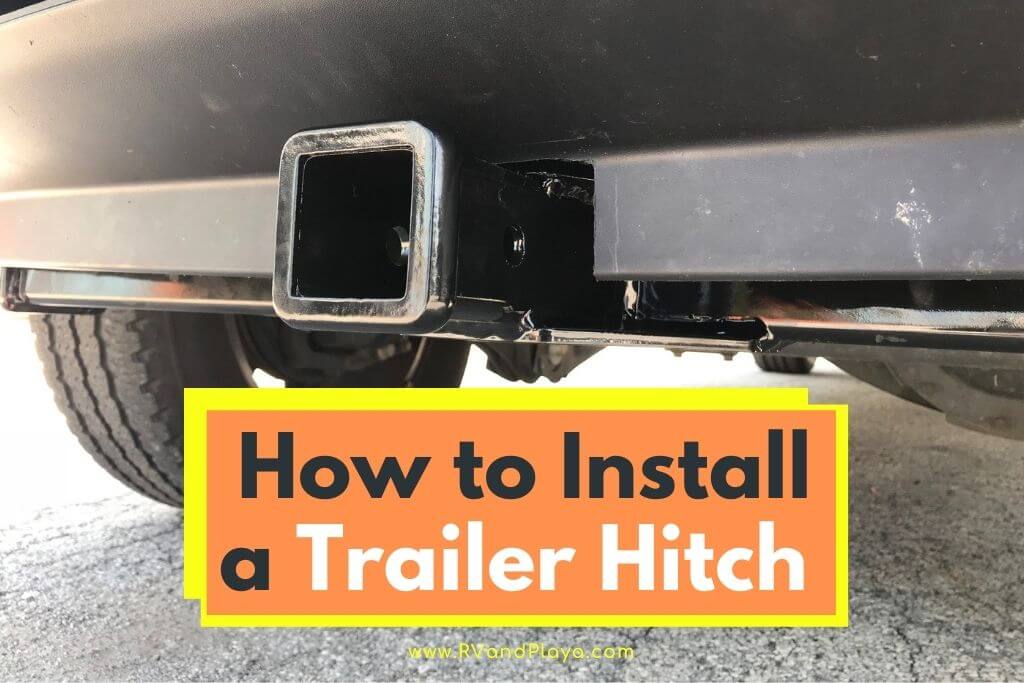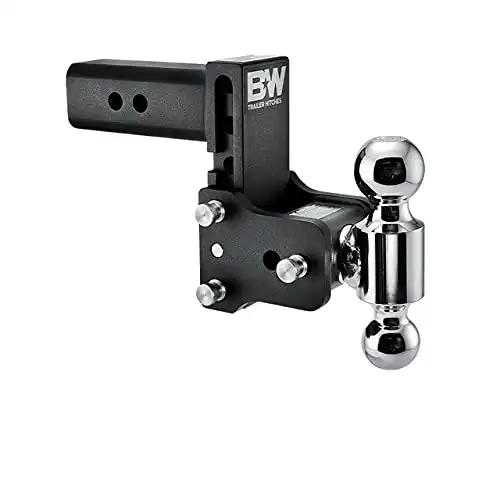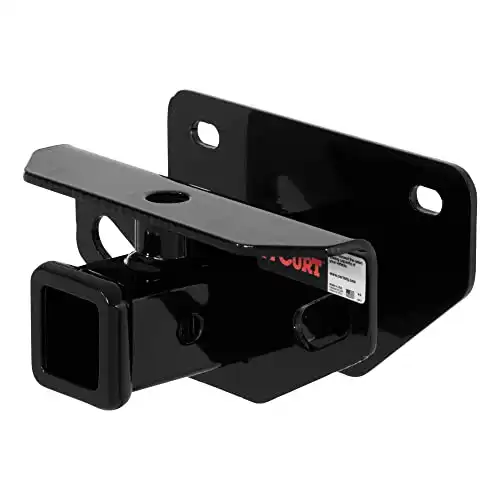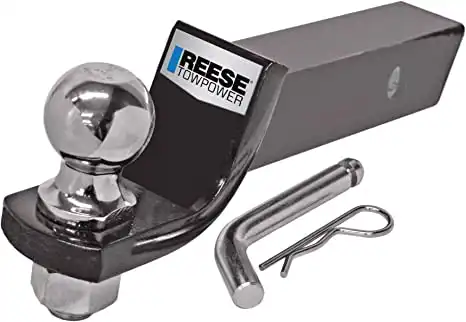Have you ever wondered how to install a trailer hitch? Look no more. We´ve got you covered.
Despite common belief, getting a trailer hitch installed isn’t that difficult. in fact, chances are that you will be able to do it yourself with a hitch installation guide and a couple of simple tools.
On this page, we want to outline the exact process that you need to follow, step-by-step, to get a trailer hitch installed on either a car or a truck.
Of course, you can always hire a professional to do it for you. However, when the process is just this simple, why would you want to do that?
So, how to install a trailer hitch on a car or a trailer? To easily install a trailer hitch just follow steps listed below:
1. Get some tools
2. Choosing the Hitch
3. Chock the Wheels
4. Lift the rear of the vehicle
5. Preparing the Rear of the Vehicle
6. Lift the Hitch into Position
7. Secure the Hitch into Position lightly
8. Tighten the Hitch Properly
9. Finishing the Job
Table of Contents
How to Install a Trailer Hitch (Step by Step Guide)
We are going to outline the process of installing a trailer hitch here. We will try to go into as much detail as we possibly can.
However, you do have to remember that the process can vary from vehicle to vehicle. It can also be dependent on the type of hitch that you are installing.
Although, we are sure that you are sensible enough to know that you should be reading through the trailer hitch manual before you install it.
This will include a lot of information about the actual installation process. You especially want to pay attention to the maximum torque that is included in the manual.
It is important to note that the installation will require two people. The weight of a trailer hitch is far too heavy for you to be able to lift it and bolt it in at the same time.
How To Install a Trailer Hitch (Hitch Installation Guide) >> Check out the video below:
Step.1: Tools Required
You will need the following:
- Wrenches
- Torque wrench with the relevant socket for the bolts
- Wheel chocks
- Vehicle jack
- Electric drill
- Wire brush
You may not need the electric drill. This will only be required if you look under the vehicle and there are no holes to attach the trailer hitch to.
There are some trailer hitches that require no drilling. So, if you do not have the required holes, you may want to look into one of those instead.
The vehicle jack is also not necessary. However, we still recommend you use one. It will provide far easier access to the rear of the vehicle. This will make the installation process a whole lot easier for you.
Here the complete tools list you need for your trailer hitch installation:
| Number | Tools used in hitch install | Priority |
|---|---|---|
| 1 | Shop light | Commonly used |
| 2 | Socket set | Commonly used |
| 3 | Ratchet | Commonly used |
| 4 | Ratchet extension | Commonly used |
| 5 | Swivel socket | Commonly used |
| 6 | Work glove | Commonly used |
| 7 | Safety glasses | Commonly used |
| 8 | Torque wrench | Commonly used |
| 9 | Jack and stands | Occasionally used |
| 10 | Pry bar | Occasionally used |
| 11 | Tape measure | Occasionally used |
| 12 | Torx bits | Occasionally used |
| 13 | Trim tool | Occasionally used |
| 14 | Screw driver | Occasionally used |
| 15 | Paint pen | Occasionally used |
| 16 | Die grinder | Occasionally used |
| 17 | Carbide drill bits | Occasionally used |
| 18 | Cutting lubricant | Occasionally used |
| 19 | Box wrench set | Occasionally used |
| 20 | Power drill | Occasionally used |
| 21 | Rotary cutting tool | Rarely used |
| 22 | Penetrating lubricant | Rarely used |
| 23 | Rat tail wire brush | Rarely used |
| 24 | Masking tape | Rarely used |
| 25 | Utility knife | Rarely used |
| 26 | Metal sheers | Rarely used |
Step.2: Choosing the Hitch
Obviously, you will also need to have a trailer hitch. There are plenty of options on the market. Do your res4earch and make sure that you choose one that is going to be perfect for your vehicle.
Remember, all vehicles have a maximum weight that they are able to tow. You need to ensure that the hitch that you do purchase is more than capable of towing this weight.
This is probably going to be a bigger concern for you if you have a larger truck as opposed to a small, passenger vehicle.
Step.3: Chock the Wheels
Your first job will be to chock the wheels. While it is unlikely that your vehicle is going to be moving while you are installing the trailer hitch, it is better to be safe than sorry, right?
Step.4: Lift the rear of the vehicle
If you are lifting the vehicle with a vehicle jack, then attach it to the relevant place on the vehicle and lift the rear.
It doesn’t need to be that high. If you are going to be using a vehicle jack, then it is especially important that you chock the wheels.
This is because there is going to be an even greater risk that your vehicle will move.
Trust us, the last thing you want is to have that vehicle come crashing down on your head.
Make sure that you know how to use the jack properly before you crawl under the vehicle. Reading the manual for your jack should tell you everything that you need to know.
While you may think that we do not need to point this out, you will be surprised at how many people use the jack incorrectly. It is just dangerous.
Step.5: Preparing the Rear of the Vehicle
Now that you have access to the back of the vehicle, you can check underneath the rear. You will want to ensure that there are holes where you can attach the trailer hitch to.
If there are holes, then grab a wire brush to clean them out. You can use a small amount of lubricant to make the job a bit easier here.
Of course, you will want to make sure that you are using actual vehicle lubricant here.
If there are no holes, and you are not using a drill-free hitch, then you will need to drill the holes.
You will need to consult the instruction manual for your trailer hitch to know exactly what you should be doing here.
This includes the hole size and how to work out where the holes will need to be placed.
Since this is something that is going to be differing from vehicle to vehicle and hitch to hitch, we will not be able to go into too much depth on this here.
Step.6: Lift the Hitch into Position
Now you need to grab the person that is working with you to help you lift the hitch into position.
As we said before, this is not a job that you are going to be able to do on your own. The hitch is going to be too heavy.
Make sure that everything is lined up with the holes (if you have to use holes to secure the hitch into position!)
Step.7: Secure the Hitch into Position lightly
Now you need to grab the bolts that came with the hitch and screw them into position. They do not have to be very tight now.
They just need to be able to hold the hitch into position while you complete the job.
Most people will tighten the bolts up with their fingers. The bolts should be large enough to do that. However, we like to use wrenches to tighten everything up.
You just need to know that your partner is strong enough to hold the hitch into position for this long.
Step.8: Tighten the Hitch Properly
Once the hitch is in position with the bolts, the person holding the hitch can release their grip.
You will now need to grab your torque wrench and tighten up the bolts as much as the manual recommends. As we said before, this is going to be different from hitch to hitch.
Step.9: Finishing the Job
Now all you need to do is remove the wheel chocks and the vehicle lift if you were using one. The job is now complete.
Test out the hitch using a few light weights inside of a trailer.
If everything seems to be going fine and it doesn’t appear as if the hitch is coming loose from the vehicle, then you should be able to use it properly.
if the hitch does appear to be coming loose, then there could be a problem with how tight you tightened the bolts. Double check them with the torque wrench.
Best Trailer Hitches
Having the right trailer hitch is a very important part of towing your vehicle. Below you will find the best 3 Trailer Hitches for Towing:
|
The B&W Tow & Stow adjustable ball mount might be the most versatile option on the market. The Tow & Stow is adjustable to the height of your trailer for level towing, which is an incredibly handy feature if you happen to have more than one trailer. Y |
The CURT 13333 is designed to provide a large variety of towing options. It works on everything including full-size cars, vans, trucks, and SUVs. These Class III trailer hitches are great for carrying fish boats, ATVs, and utility trailers. |
A well-known brand when it comes to trailer and towing accessories, Reese Towpower has a wide lineup of hitches. This recommendation is a Class III starter kit, which includes a ball mount, hitch ball, pin, and clip. |
The B&W Tow & Stow adjustable ball mount might be the most versatile option on the market.
The Tow & Stow is adjustable to the height of your trailer for level towing, which is an incredibly handy feature if you happen to have more than one trailer. Y
The CURT 13333 is designed to provide a large variety of towing options. It works on everything including full-size cars, vans, trucks, and SUVs.
These Class III trailer hitches are great for carrying fish boats, ATVs, and utility trailers.
A well-known brand when it comes to trailer and towing accessories, Reese Towpower has a wide lineup of hitches.
This recommendation is a Class III starter kit, which includes a ball mount, hitch ball, pin, and clip.
How to Install a Trailer Hitch Ball? (Hitch Ball Installation Guide)
Installing a trailer hitch ball isn’t actually anywhere near as difficult as you may think. In fact, most of the effort comes from ensuring that you choose the right hitch ball for the vehicle that you own.
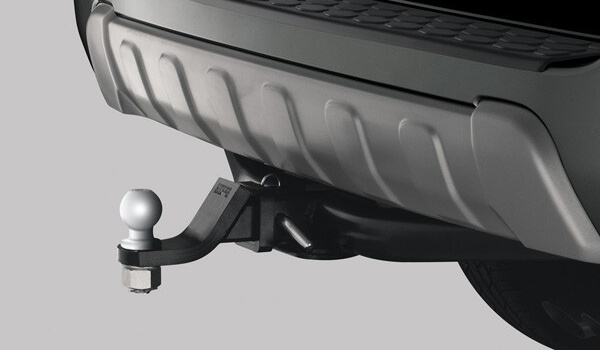
Even this shouldn’t be that difficult. Every manufacturer of trailer hitches will also sell hitch balls. Just pick up something from the same manufacturer and you are pretty much covered.
For the hitch ball installation, you just then need to follow these steps:
Step.1: Begin by placing the hitch ball directly onto the hitch. it is likely that you will need to slide it into position. However, as always, you will want to check the manufacturer’s manual to know exactly what you need to do.
However, as we said, it isn’t really a difficult thing to install the hitch ball, so we doubt that you will go wrong! Everything should be pretty obvious.
Step.2: Now you need to look for the hole on the side of the hitch. Slide the hitch pin through this. Obviously, you will want to ensure that it is going through the hitch at the same time.
Step.3: Once the hitch pin has gone through, secure it with the clip, and you are done.
Step.4: You may want to give the hitch ball a bit of a tug to make sure that it doesn’t move from position. However, if you have followed these steps, then we are pretty positive that this is not going to be happening anyway.
Trailer Hitch ball installation >> Check out the video below:
How to Install a Hitch on a Truck – Guide
Installing a hitch onto a truck isn’t that much different from the process that we outlined before.
Perhaps the only thing that you will want to pay extra attention to is the weight limit for the hitch.
Since trucks can pull a lot more weight than your average car, you want to ensure that you pick a hitch that you can use to the full capabilities of your vehicle.
Other than that, the steps are exactly the same as we mentioned previously. Here is a quick outline for the truck hitch installation:
- Chock the wheels of your vehicle.
- Jack the rear of your vehicle if possible. It will make it easier for you to access the area where you need to attach the hitch.
- Using a second person, lift the hitch into position and bolt the hitch into place.
- Use a torque wrench to ensure that you have tightened the bolts to the minimum outlined in the manual.
That is all that is involved. Although, do bear in mind that if you have a truck, you may also want to do a spot of wiring too.
This will allow you to use electric brakes on your trailer. However, the wiring is going to be out of the scope of this guide. It can get pretty complicated.
How to Install a Hitch Receiver on Your Truck! (Truck Hitch Installation Guide) >> Check out the video below:
How Much Does it Cost to Install a Hitch?
If you are installing it yourself, then it will be the cost of your tools. Most of the tools required for this job are pretty common, plus the cost of the hitch itself.
This can be between $100 and $500, depending on the vehicle that requires the hitch, plus the quality of the hitch that you are purchasing.
If you plan on getting a professional to install the hitch for you, then the cost of the installation will be between $100 and $500.
Again, this is going to be dependent on the vehicle that you have. Some are a bit more complicated to install hitches onto. in some cases, you may also want to have electrical wiring installed.
This means that you can add a good couple of hundred dollars extra to that price.
Read also: How Much Does It Cost to Install a Trailer Hitch? (with 9 examples)
Who Installs Trailer Hitches Near Me
There are several companies that can install trailer hitches near your locations. In the list below you will find the Top 4 best companies that install trailer hitches:
- U haul trailer hitch installation
2. Pep Boys hitch installation
3. Costco trailer hitch installation
4. Trailer hitch installation Walmart
Trailer Hitch Installation FAQs
Let’s close out this page about trailer hitch installation with answers to some of your most frequently-asked questions about them!
Can I install a hitch myself?
Absolutely! You can install a trailer hitch yourself. The job can be carried out completely on your own. You just need a simple set of hand tools. You do not even have to know anything about vehicles.
You just need to know how to use some basic tools and you are ready to roll.
How long does a hitch installation take?
How long does a hitch installation take? On average it should take you no longer than an 1 or 2 hours to install a hitch. If you have done it before, then the process may be even quicker than this. For the most part, it is nothing more than tightening bolts and you are fine.
Can you put a hitch on any car?
Technically, yes. You can put the hitch on any car. Although, you may not want to. Every car should be capable of towing. However, passenger cars aren’t really made for towing extreme weights.
You may be able to tow a trailer carrying items to the dump, but once you start to get bigger than this, then your car just won’t cut it.
There will almost always be a place on your vehicle to attach a trailer hitch to, though!
Do I need wiring for a hitch?
Do I need wiring for a hitch? For a standard hitch, no you do not need wiring. However, if you plan on adding a brake controller into your vehicle so that you can control the electric brakes on a trailer then, yes, you are going to need to have wiring put into place.
This is not really something that you will be able to do on your own if you do not have experience wiring up systems.
Therefore, you will need to get in touch with an expert to wire everything up for you.
Read also: Curt Wireless Brake Controller: 9 Facts You Should Know (Explained)
Will installing a trailer hitch void my warranty?
Will installing a trailer hitch void my warranty? Installing a hitch itself shouldn’t void your warranty. However, it will void your warranty if the trailer hitch installation causes a problem with your vehicle. For example, if the trailer hitch weakens the chassis of the vehicle, and the vehicle manufacturer can prove this, then your warranty will be voided.
However, a vehicle manufacturer should never deny a warranty claim purely because of the hitch.
They would actually have to prove that it is the hitch that caused the problem with your vehicle.
How do you attach a trailer hitch?
The trailer hitch will need to be bolted onto the rear of the vehicle. There will be plates on the underneath of the vehicle that will allow you to bolt the hitch into place.
Of course, the exact process for each trailer hitch will vary. This means that you will need to read the manual that came with the hitch to know exactly what you should be doing.
How tight should a trailer hitch ball be?
How tight should a trailer hitch ball be? A trailer hitch ball should be as tight as you can get it while still being able to close the latch. If you are not able to close the latch, then the hitch ball is too tight.
The coupler should never be able to fall off a trailer hitch ball that is tight enough.
Can you put a hitch on a Corolla?
Can you put a hitch on a Corolla? Yes. You can put a hitch on a Corolla. Despite this being a vehicle mostly designed for passengers, it has a decent towing capacity.
However, you will need to do your research into the vehicle that you own to determine how much weight you are able to tow. You should not go over the towing limit.
Can you put a hitch on a Honda Civic?
Can you put a hitch on a Honda Civic? Yes. You can put a hitch on a Honda Civic. However, do bear in mind that because the Honda Civic is a passenger car, it is unlikely to have a huge amount of towing capacity. You will only be able to pull light loads only.
How much does it cost to put a hitch on a Subaru Outback?
It depends on where you live. A hitch may cost about $100 to $300 for the installation. However, you will also need to factor in the cost of buying the equipment on top of that.
This could easily be another $200 to $300.
Final Word
Installing your own trailer hitch isn’t going to be that much effort. In fact, you do not need to have that much experience with vehicles.
The process should be fairly self-explanatory. Although, the low cost of trailer installation means that a lot of people are more than happy to outsource the job to a professional.
This way, you can be sure that it is going to be done 100% properly.
References
https://www.curtmfg.com/trailer-hitch-installation
Recent Posts
How Much Does It Cost To Install A 5th Wheel Hitch Near Me? [UPDATED]
Have you ever wondered how much does it cost to install a 5rh wheel hitch? well, you have decided that routine is dull, and you have chosen adventure in the form of a 5th Wheel. Life is all about...
How Much Does It Cost to Install a Trailer Hitch? (with 9 examples)
The average cost to install a trailer hitch will vary between $250 and $750. Trailer hitch installation near me? Perhaps you’ve just bought a new trailer, or you’re a long-time tower that’s...

